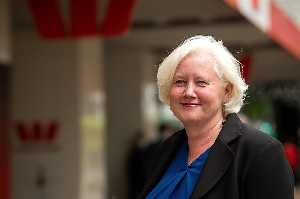
Westpac is sticking to its forecast of a 3.25% OCR bottom.
Chief economist Kelly Eckhold says although other economists are predicting an OCR of possibly 2.5% because the country’s economic recovery is piecemeal and the uncertainties of the US-led global trade war, Westpac would rather take a more considered approach.
The BNZ is predicting the OCR will find a base at 2.75% in August and remain at the low point for an extended period.
ANZ has pencilled in two further OCR cuts in August and October taking the OCR down to a low of 2.5%, while Squirrel Mortgages also sees a possibility of it dropping to the same level, suggesting a revision of the neutral OCR estimate to between 2.50% and 2.75%.
Talking to mortgagehq YouTube channel, Eckhold says there were some knee-jerk reactions to the US tariffs. “The costs to New Zealand of the trade war are not that large - a 10% tariff worth about 0.2% of GDP, or $900 million a year.
“It is not necessarily the end of the world when you consider export prices have risen quite considerably, perhaps 15-20 percentage points over the year,” he says.
“If things settle down, perhaps we have a bit of downside risk to our interest rates forecasts, but maybe not as much as some of the knee-jerk reactions from financial markets and other commentators on the street.”
Eckhold’s preference is to sit back and do a careful, clam assessment of what is likely to happen rather than jumping at shadows.
No pressure
As for any effects on housing, he says there is no upward pressure on interest rates and house prices are going up slowly.
REINZ March data showed the House Price Index gained a model 0.2%, marking five months of gains. However, on an annual basis, house prices were down 0.7%.
Recent drops in wholesale interest rates are expected to lead to a cut of perhaps 20-25 basis points in fixed longer-term interest rates.
Some banks have even reduced their short-term interest rates to now sit at 4.99%, which was the two-year fixed interest rate many borrowers have grabbed when their mortgages rolled over in the past few weeks, Eckhold says.
“Once things settle down economically there is a decent chance there will be leg down in fixed mortgage rates again.
He says this must be good for first home buyers and property investors as it will improve affordability.
Westpac has seen a steady increase in credit demand in the past six months.
“For house prices we are not talking about a boom, but it is certainly supportive.”
ASB says despite the OCR cuts since the middle of last year, there has yet to be any notable impact on house prices.
The primary reason for the subdued market is the imbalance between demand and supply. Supply levels continue to rise, while demand remains weak due to the softer labour market and easing (but stabilising) migration.
Given the combination of persistent challenges facing the housing market and the global uncertainties, the bank says it is maintaining its expectation of a gradual house price recovery throughout the rest of this year.
It anticipates more substantial changes in the housing market once the labour market improves, likely in the second half of this year, accompanied by further reductions in mortgage interest rates following expected further OCR cuts.




Comments
No comments yet.
Sign In to add your comment